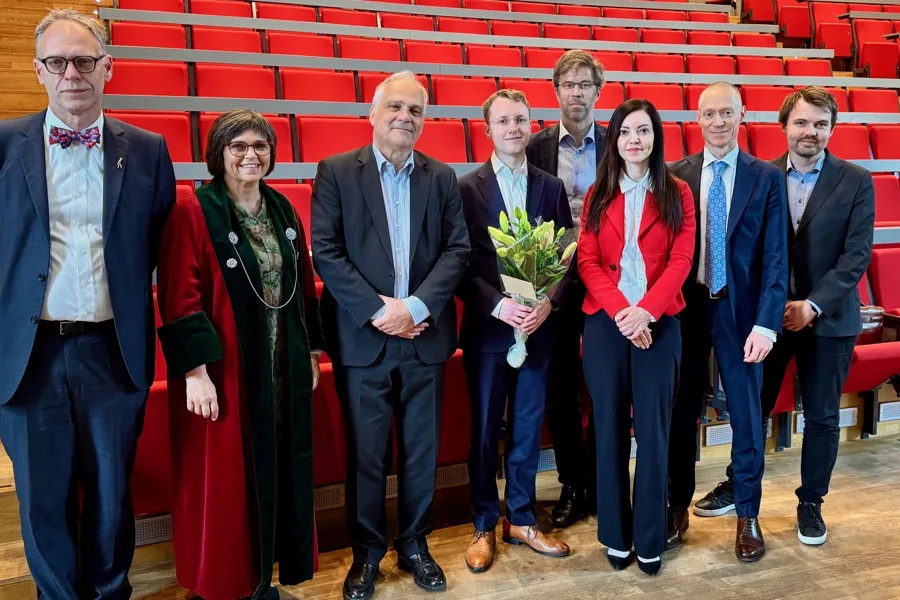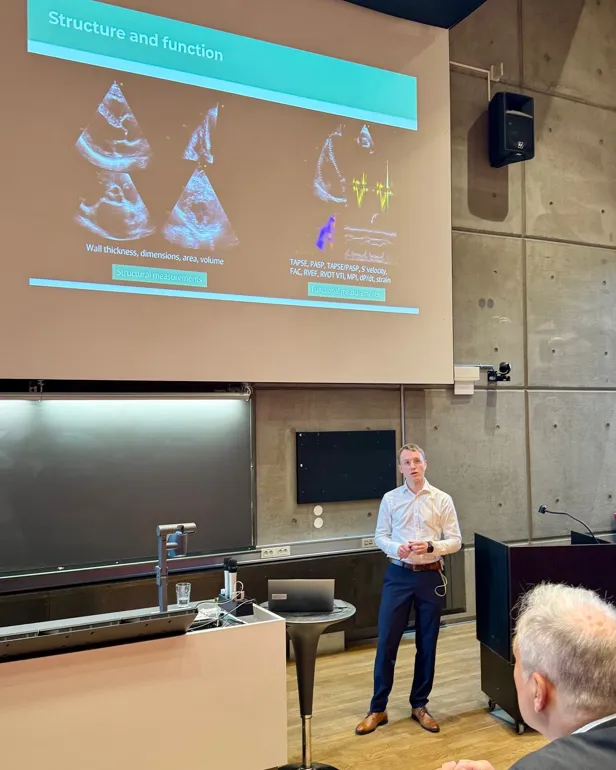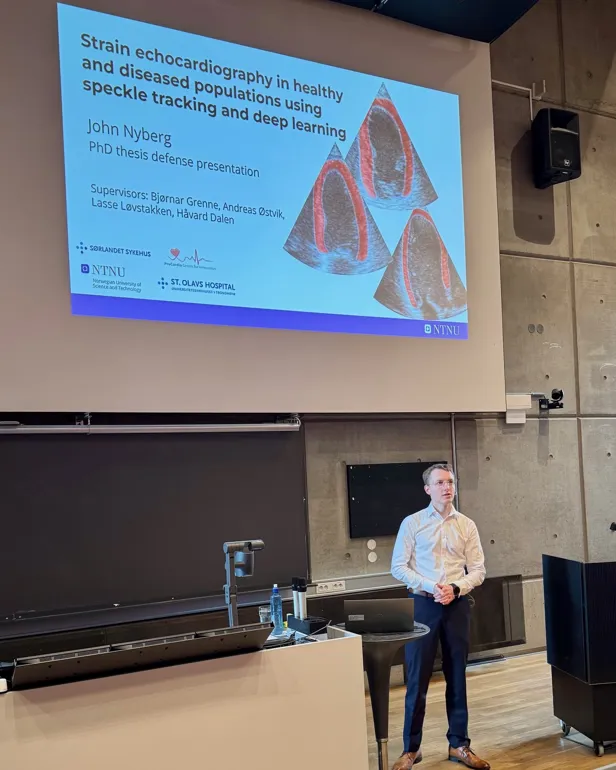Dissertation John Nyberg
On June 18th, John Nyberg defended his thesis titled "Strain echocardiography in healthy and diseased populations using speckle tracking and deep learning" for the degree of Philosophiae Doctor at the Department of Circulation and Medical Imaging, Faculty of Medicine and Health Sciences, Norwegian University of Science and Technology (NTNU). The trial lecture was titled "Advancements in the echocardiographic evaluation of right ventricular function: where do we stand in 2025? Current techniques and future perspectives".

Photo: Private
Adjudication committee
- First opponent: Professor Frank A. Flachskampf, Uppsala universitet, Sweden
- Second opponent: Associate Professor Dana Cramariuc, Universitetet i Bergen
- Third member and chair of the evaluation committee: Professor Arne Seternes, NTNU
Chair of defence
- Guri Greiff, St.Olavs Hospital
Supervisors
- Associate Professor Bjørnar Grenne, Department of Circulation and Medical Imaging, Faculty of Medicine and Health Sciences, Norwegian University of Science and Technology (NTNU)
- Professor Lasse Løvstakken, Department of Circulation and Medical Imaging, Faculty of Medicine and Health Sciences, Norwegian University of Science and Technology (NTNU)
- Professor Håvard Dalen, Grenne, Department of Circulation and Medical Imaging, Faculty of Medicine and Health Sciences, Norwegian University of Science and Technology (NTNU)
- Dr. Andreas Østvik, Department of Circulation and Medical Imaging, Faculty of Medicine and Health Sciences, Norwegian University of Science and Technology (NTNU)
Summary
Echocardiographic measurement of cardiac deformation is an accessible and relatively inexpensive clinical tool that provides important diagnostic and prognostic
information. The drawbacks of conventional methods are high time consumption
and significant operator-related measurement variability.
This thesis comprises three papers. In the first study, we measured global deformation (strain) in all four cardiac chambers using a conventional semiautomatic
method in echocardiograms from participants in the fourth wave of the Trøndelag
Health Study (HUNT).We evaluated which clinical characteristics varied the most
with the deformation measurements in the healthy study participants without cardiac
disease, to construct reference ranges of deformation measurements adjusted
for age, sex, and other clinical characteristics.
In the second study, we compared the reproducibility of deformation measurements
in smaller regions of the left ventricle between two consecutive echocardiograms.
A novel method based on artificial intelligence (AI) measured all images
fully automatically, and it was compared against a conventional semi-automatic
method. The AI-based method had better reproducibility for regional deformation
measurements compared to the conventional method, equivalent to the reproducibility of the most used method to measure global left ventricular deformation.
In the third study, we analyzed the degree of deformation and the variation
in the time to peak deformation in the left ventricle (mechanical dispersion) in
patients with heart failure and reduced ejection fraction. The measurements were
performed using a novel AI-based method, which fully automatically measured
all images. The measurements were compared with conventional semiautomatic
measurements. The combination of strain and mechanical dispersion showed an
important prognostic value in identifying patients at high risk of developing life-threatening arrhythmia.





